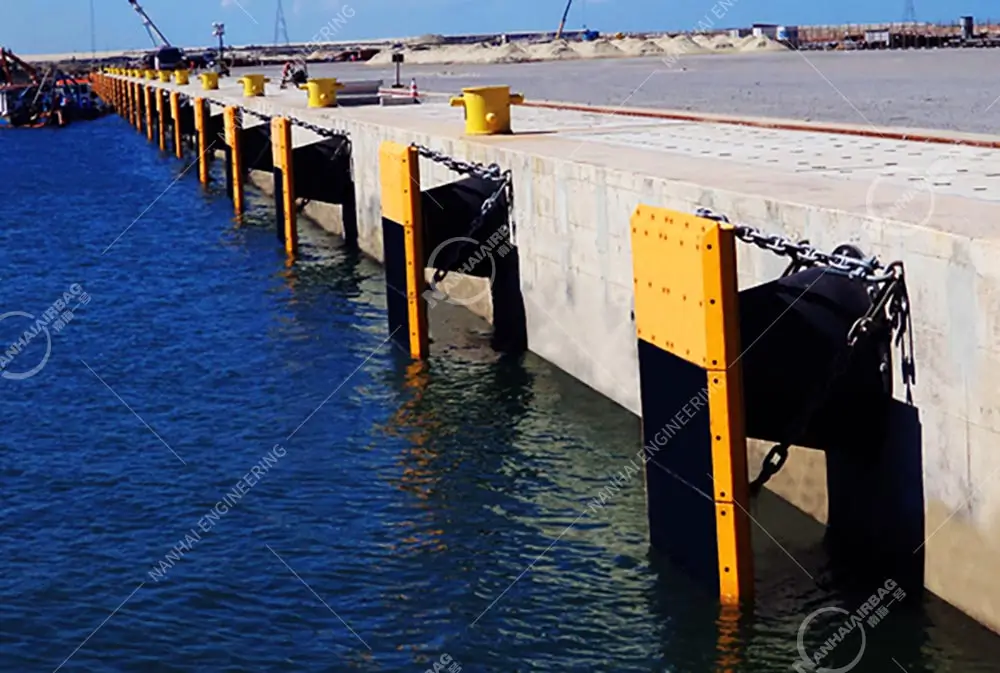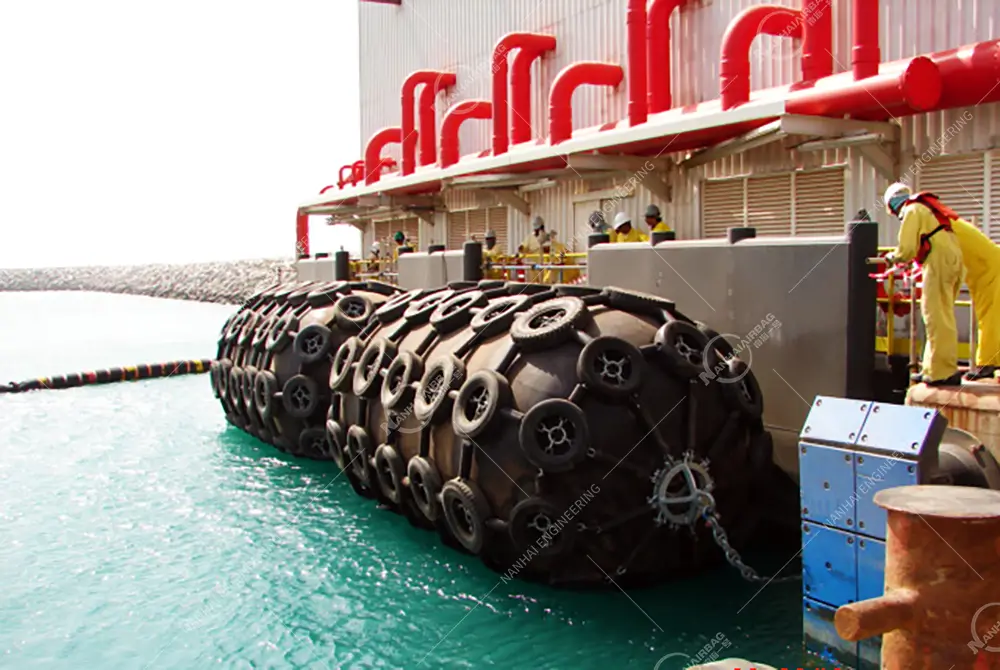Exploring Marine Cargo Transport Ships
07/28/20255 Most Common Marine Salvage Airbags
07/29/2025What is fender in Harbour?
Simply put, a fender in a harbour is a protective buffer device installed on docks, piers, quay walls—or even vessels—to absorb impact energy and prevent damage when ships berth or come alongside. Made from rubber, foam elastomer, or even timber in some cases, they cushion contact between vessel hulls and fixed structures.
Marine fenders may be fixed (attached to harbour structures) or floating/mobile (pneumatic or foam‑filled), designed to absorb kinetic energy with low reaction force, protecting both the vessel and the berth.
Types of Harbour Fenders
- Cylindrical fenders: simple extruded rubber tubes
- Arch fenders: low reaction force, durable
- Cone fenders: high energy absorption
- Pneumatic (Yokohama) fenders: floating airbags for ship‑to‑ship operations
- Foam‑filled fenders: maintenance‑free, unsinkable
- Timber fenders: used in traditional docks or lock gates

-fenders-拷贝.webp)



Why It Matters (and Why It’s Urgent)
Harbour operations are faster and more frequent than ever before—even a small impact during docking can result in expensive hull damage or costly repair work to quay walls, not to mention downtime for the vessel. For example, imagine a container ship berthing at a busy terminal: without proper fendering, the energy transferred during berthing can crack concrete, dent hulls, and even injure crew.
Today’s ports demand safer, faster, and more reliable berthing to minimize delays and maintenance costs. That makes designing correct, well‑maintained fender systems not just important but urgent—especially for terminal operators like NANHAI who need to protect assets and ensure operational efficiency.
What Is a Fender in a Harbour?
A harbour fender is a durable buffer installed on berth structures or vessels to absorb kinetic energy during mooring. It protects both ships and port infrastructure from damage by cushioning impact and reducing force transmission. Fenders are made of rubber, foam, or sometimes wood, and come in fixed or floating types depending on berthing conditions.
Why Continue Reading?
- You’ll discover how to choose the right fender type for your vessel and port conditions.
- Learn from real-world NANHAI case studies (hypothetical or based on common scenarios).
- Understand maintenance best practices to maximize service life and avoid surprise failures.
FAQ
What material are harbour fenders made of?
Fenders are typically made from rubber, foam elastomers, pneumatic (inflatable) structures, or even timber in some traditional dock settings.
How do you select the right marine fender?
Selection depends on vessel size, berthing speed, tidal range, hull shape, and environmental conditions. Berthing energy calculations inform what size and type of fender will safely absorb impact while keeping hull pressure low.
What are the main types of harbour fenders?
The most common types include cylindrical, arch, cone/cell, pneumatic, and foam‑filled fenders—each optimized for different energy‑absorption and reaction‑force characteristics.
How long do marine fenders last?
Design life typically ranges from 5 to 15 years for general cargo berths, and 10 to 20 years for more specialized terminals like oil or LNG facilities. This depends on vessel frequency, materials, UV exposure, and maintenance.
How NANHAI Can Help
At NANHAI, we specialize in designing, supplying, and installing fender systems tailored to your harbour conditions. Whether you need high-capacity cell fenders for bulk terminals, pneumatic units for ship‑to‑ship operations, or simple arch/cylindrical fenders for general-purpose quays, we handle it all. We ensure compliance with global standards like PIANC 2002 and BS 6349‑4, and provide engineering support to optimize spacing and mounting.
Summary Table: Key Points
| Question | Answer |
|---|---|
| What is a harbour fender? | A buffer device to absorb docking impact, protecting vessels and structures. |
| Why urgent? | Frequent berthing demands robust protection to avoid damage and downtime. |
| Types? | Cylindrical, arch, cone/cell, pneumatic, foam‑filled, and timber fenders. |
| Materials? | Rubber, foam elastomer, inflatable rubber, sometimes timber. |
| Lifespan? | 5–15 years (general), up to 20 years (specialized terminals). |
Final Thought
Understanding what a fender is in a harbour, and choosing the right type, is critical for safe and efficient port operations. That’s why NANHAI focuses on delivering engineered fendering solutions that meet your vessel traffic, tidal conditions, and infrastructure demands—ensuring you berth faster and safer, every time.
For expert consultation or custom fender solutions, reach out to NANHAI—we’re here to help your port run smoothly.
